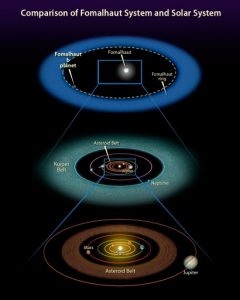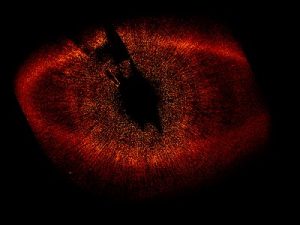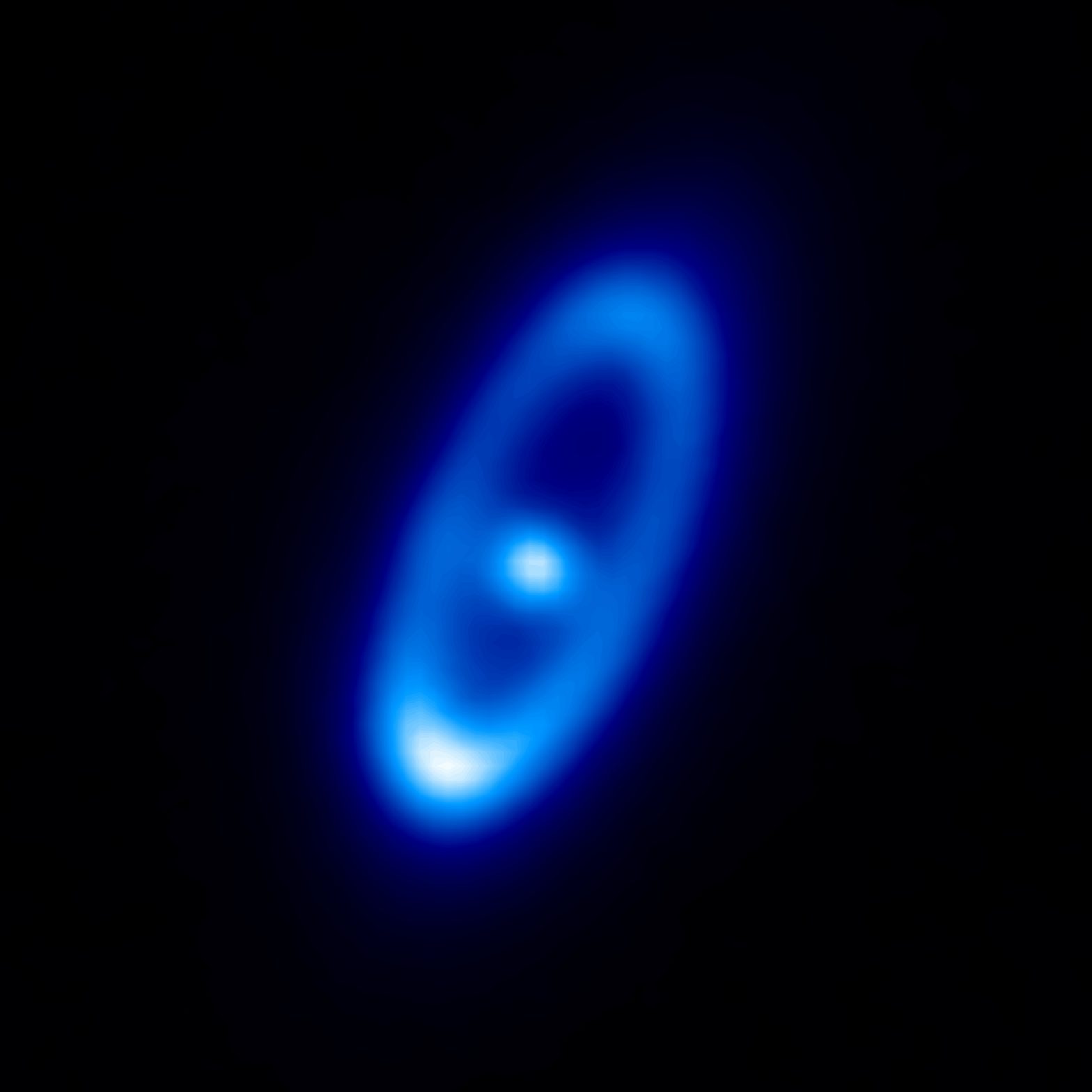| Basic Information | |
| What is this? | The star Formalhaut, which is surrounded by a ring of dust |
| Where is it in the sky? | In the constellation of Piscis Austrinus |
| How big is it? | The diameter of the dust ring is more than two hundred times the distance from Earth to the Sun |
| How far away is it? | Around 25 light years away |
| What do the colours represent? | The brighter parts of the dust ring are warmer. |
Downloads
See this object in:

Astronomers Herschel have studied a ring of dust around the nearby star Fomalhaut and have deduced that it is created by the collision of thousands of comets every day.
Fomalhaut, a star twice as massive as our Sun and around 25 light years away, has been of keen interest to astronomers for many years. With an age of only a few hundred million years it is a fairly young star, and in the 1980s was shown to be surrounded by relatively large amounts of dust by the IRAS infrared satellite. Now Herschel, with its unprecedented resolution, has produced the best ever far-infrared images of the system. The star itself is surrounded by hot gas and dust, and there is a warm, dusty disc surrounding it as well. But the most interesting feature is a belt of dusty material on the outer edges of the system.
The belt of dust is relatively far from the star itself, at more than 100 times the distance of the Earth from the Sun. This makes it very cold, at around -200 Celsius, with around half of it being made of water ice. “This disc is similar to the Kuiper Belt in our Solar System, which lies beyond the planet Neptune, but is much, much younger,” explained Dr Bruce Sibthorpe, of the UK Astronomy Technology Centre. “As well as relatively large objects, such as Pluto, our Kuiper Belt also contains millions of much smaller objects”.

The dusty belt around Fomalhaut is confined into a fairly narrow ring and is also off-centre relative to the star, both of which imply that there could be planets orbiting close to it. In 2008 the Hubble Space Telescope provided possible evidence for a planet orbiting within it – though that has yet to be confirmed.
The way that the dust absorbs, emits and scatters the starlight can be used to deduce the size of the grains. The infrared observations with Herschel have found that the dust absorbs light as if it were made of very small grains, just a few thousandths of a millimetre across. Meanwhile the Hubble Space Telescope images indicate that it scatters light in the same way as much larger particles. These two properties are satisfied if the dust grains are “fluffy”, being made of small particles loosely stuck together to make larger ones.


An example of a “fluffy” dust grain, such as those that are thought to exist in the Fomalhaut system. Image credit: NASA
A significant problem with such fluffy grains is that the smaller ones should be blown out of the system by the intense light from Fomalhaut itself. The fact that they are present implies that there is a continuous supply of small particles, most likely produced bythe continual collisions and disintegration of larger asteroid-sized objects. Such a ring would contain many icy comets, but to produce the amount of dust seen by Herschel requires the equivalent of around 2000 1km sized comets to be destroyed every day.
“I was really surprised,” says Dr Bram Acke, at the University of Leuven, Belgium, who led this study. “To me this was an extremely large number.” Such a large number of collisions implies that there are trillions of comets in the ring in total, containing enough material to make over one hundred Earths.
“Herschel is the only facility with the capability to study the small dust grains in such high detail, and thereby provide important insights into the on-going activity within the Fomalhaut disc,” says Dr Sibthorpe. “These studies are showing us a young Extra-Solar System in unprecedented detail.”
Detailed Information
DEBRIS
Acke et al. (2012) Astronomy & Astrophysics 540, A125

